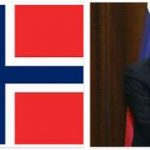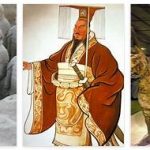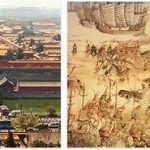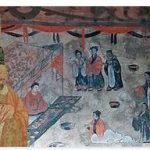5: Economic consequences of the freeze
Trade between Norway and China has increased considerably in recent decades, especially since China became a member of the World Trade Organization (WTO) in 2001 . In 2015, China was the third largest country of origin for imports to Norway, and number nine on the list of countries to which Norway exports, with 10.5% and 2.9% of total Norwegian imports and exports, respectively. Norway, on the other hand, came in 65th place among China’s trading partners in 2012.
A joint Norwegian-Chinese government study shows that Norway’s and China’s economies are largely complementary : Norwegian imported goods consist of labor – intensive goods such as consumer electronics, textiles and footwear. Norwegian exports to China mainly consist of goods that require high professional competence and a lot of capital, such as machines and chemicals, in addition to raw materials such as nickel and significant amounts of seafood. The two countries can thus benefit from the other’s economic advantage, and there are few significant economic sectors in Norway that are threatened by Chinese competition.
In terms of investment, Norway is the Scandinavian country that has attracted the most Chinese capital, a total of 5.45 billion dollars (Sweden 4.9 billion and Denmark 0.7). The sale of silicon manufacturer Elkem to China National Bluestar in 2011 ($ 2 billion and the offshore technology company Awilco in 2008 ($ 2.4 billion) are considered the most significant acquisitions.
The Nobel Peace Prize in 2010 was nevertheless also crucial for the economic relations between China and Norway. Given Beijing’s habit of using economic sanctions against countries it believes have violated their core interests , it was expected that Norwegian trade with China would also decline sharply. Countries where the political leadership receives the Dalai Lama are, on average, punished with a 16.9% decline in exports to China the following year. But although the economic consequences after the Peace Prize in 2010 have been noticeable, they have been far milder than expected.
Instead of a decline in exports the following year, exports instead increased by 20%. Following a later flattening after the financial crisis, trade reached new record levels in 2015 : Norwegian exports to China increased by 18% from 2014 to NOK 23.7 billion in 2015, while imports of Chinese goods increased by 21.5% to NOK 64.8 billion. The fact that the two economies were initially very complementary and that an imbalance in trade went in China’s favor, seems to have shielded the Norwegian-Chinese trade from being hit hard by the tense political relations.
In addition, Norwegian goods are aimed at key sectors in the Chinese economy. Through the export of goods such as silicon and aluminum as well as technology for Chinese shipping and offshore operations, Norway is helping to modernize key areas of China’s economy. Beijing is thus unmotivated to put too many sledges in the way of Norwegian imports, as continued growth is enormously important for the Communist Party’s legitimacy (support) in the population. In this sense, the Chinese “core interest” in maintaining a stable one-party government is both a reason for the reactions to Liu Xiaobo’s peace prize, but also a reasonthat China did not punish Norway too harshly economically afterwards. Nevertheless, there is little doubt that trade with China would have been even higher had it not been for the Peace Prize award ceremony in 2010. A recent study has estimated that Norway lost between 780 million and 1.3 billion dollars in exports to China on the award of the Nobel Peace Prize to Liu Xiaobo.
6: Norway in the crane dance
The trade interests of the two countries clearly coincide. The picture is far more complex when it comes to broader political and value issues. The controversy surrounding the award to Liu Xiaobo underscores this. Norway’s foreign policy has traditionally been based on liberal values. These are values that are not necessarily shared by China. This tradition has also been the driving force in Norway’s commitment to China when it comes to human rights issues . Here, the main arena was the human rights dialogue between Norway and China that started in 1997. The dialogue ended after 2010, although Norwegian partners have been able to promote understanding of human rights towards Chinese partners in important areas such as prison reform and human rights education.
The Sino-Norwegian relationship puts the spotlight on some key dilemmas for the small Nordic states. These dilemmas were for a long time far more urgent for Norway than for the other Nordic countries. For small trade-dependent states and economies, there are generally two international factors and goals that are important:
- good access to foreign markets
- a stable and regular international system.
These goals have largely coincided, especially after the Cold War. According to VAULTEDWATCHES.COM, China’s emergence as a dominant economic player outside the Western liberal sphere may lead to these goals no longer matching each other as well. Increasingly, what serves Norway economically may come into conflict with what supports a liberal international political order, and vice versa.
Economically, Norway has proved quite resilient to Chinese pressure. As regards the international political system perspective, Norway, on the other hand, is somewhat more vulnerable. For a small country that is fundamentally dependent on a stable world order, it is problematic to have a “non-relationship” with the country that will probably soon become the world’s largest economy. As the Norwegian government has made clear, it is in both Norway’s and the world’s interest that China succeeds in its economic reforms – that the country manages to establish a stable society that can also contribute in a positive direction internationally.
It has been a dilemma for Norway to be cut off from political dialogue with China, not least because the two countries also have common interests in a number of issues, from global, such as climate change and the development of the High North, to local, such as development of sustainable welfare systems.
7: Nordic platform
On the Norwegian side, many think that several geopolitical developments – such as Russia’s more aggressive stance, the EU’s ongoing problems and the Arctic’s growing importance – call for stronger regional, Nordic co-operation . Since Norway will take over the presidency of the Nordic Council of Ministers in 2017 , Foreign Minister Brende stated that Norway’s foreign policy aims to strengthen Nordic co-operation to secure the Nordic region in a rapidly changing world. Then it is interesting that the Nordic Council of Ministers has stated that in the future they will also explore the possibility of increased contact with China at the Nordic level. Chinese representatives have also requested such a Nordic platform.
Given the situation, Norway is the Nordic country that should have the most to gain from a Nordic platform vis-à-vis China: Such a platform can open a channel for political contact that has long been lacking in the Norwegian-Chinese relationship . In addition, it can help establish an institutional framework for China dialogue at the regional level.
Such a Nordic forum can naturally not be compared with the dense European framework that has been very useful for Nordic EU countries. However, such a new platform could contribute to an increased contact area, and a closer network between the Nordic countries both in relation to China, and between the respective countries’ China policies. A possible Nordic “5 + 1” platform for dialogue and political contact with what is the fastest growing power in the ongoing global change of power would be an institutional innovation in Norway’s interest. At the same time, the recent opening in the Norwegian-Chinese relationship means that the Nordic countries are more on an equal footing in a joint Nordic dialogue with China.









